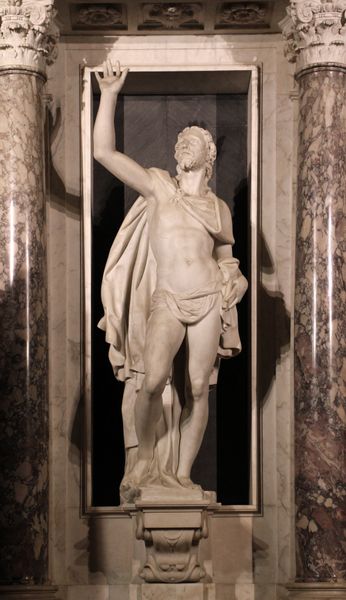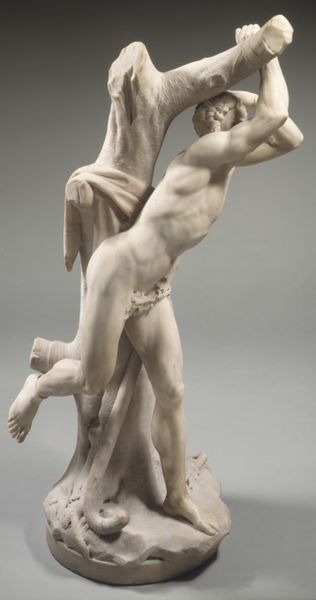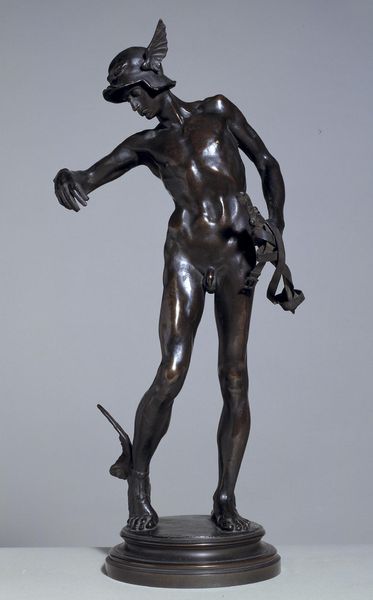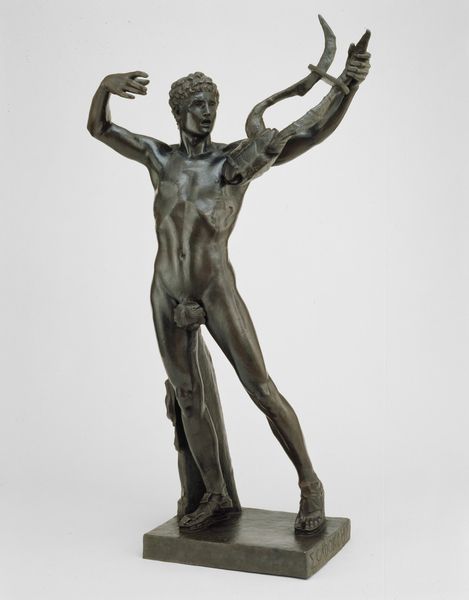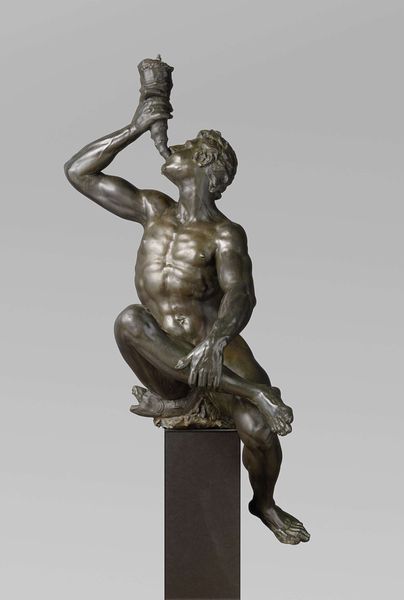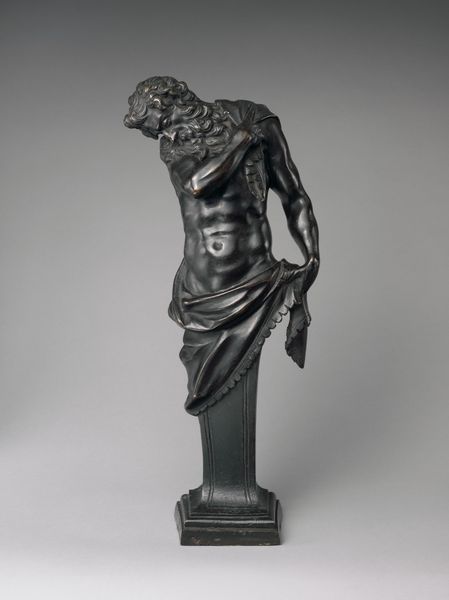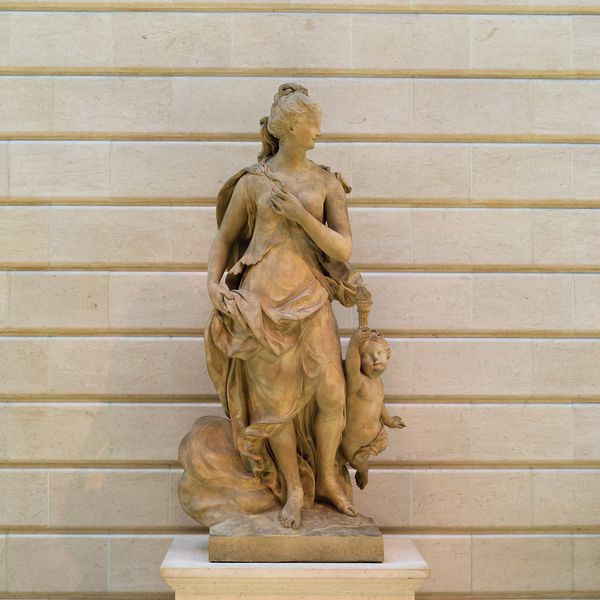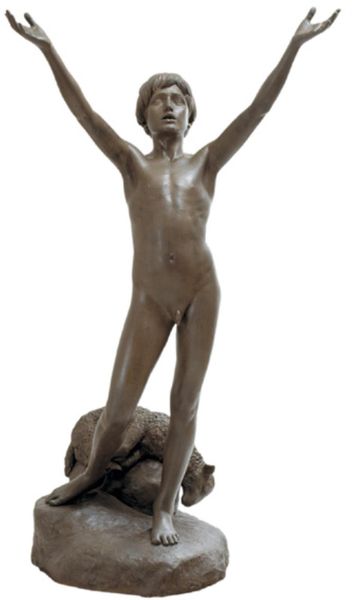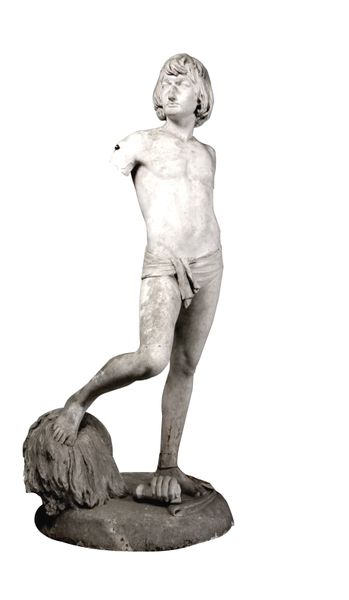
sculpture, marble
#
neoclacissism
#
sculpture
#
classical-realism
#
figuration
#
sculpture
#
history-painting
#
decorative-art
#
marble
#
nude
#
male-nude
Dimensions: Overall (confirmed): H. 95 1/2 x W. 75 1/2 x D. 40 1/2 in. (242.6 x 191.8 x 102.9 cm)
Copyright: Public Domain
Antonio Canova sculpted 'Perseus with the Head of Medusa' in marble, though the precise date remains unknown. Canova was at the height of his career during the late 18th and early 19th centuries when Europe was witnessing the rise and fall of empires. The statue encapsulates a pivotal moment from Greek mythology, but it also serves as a powerful reflection on themes of power, gender, and monstrosity. Perseus, the celebrated hero, stands triumphant, displaying Medusa's severed head, a symbol of his victory over a monstrous, female figure. But what does it mean to portray Medusa, a victim of violence, as a monster deserving of such a fate? The marble, cool and smooth, belies the violent act it portrays, inviting us to question the narratives we inherit and the power structures they uphold. Canova's statue prompts us to reflect on whose stories are told and how, and whose are silenced or demonized. It challenges us to consider the complexities of heroism and the enduring power of myth in shaping our perceptions of gender, power, and identity.
Comments
No comments
Be the first to comment and join the conversation on the ultimate creative platform.
